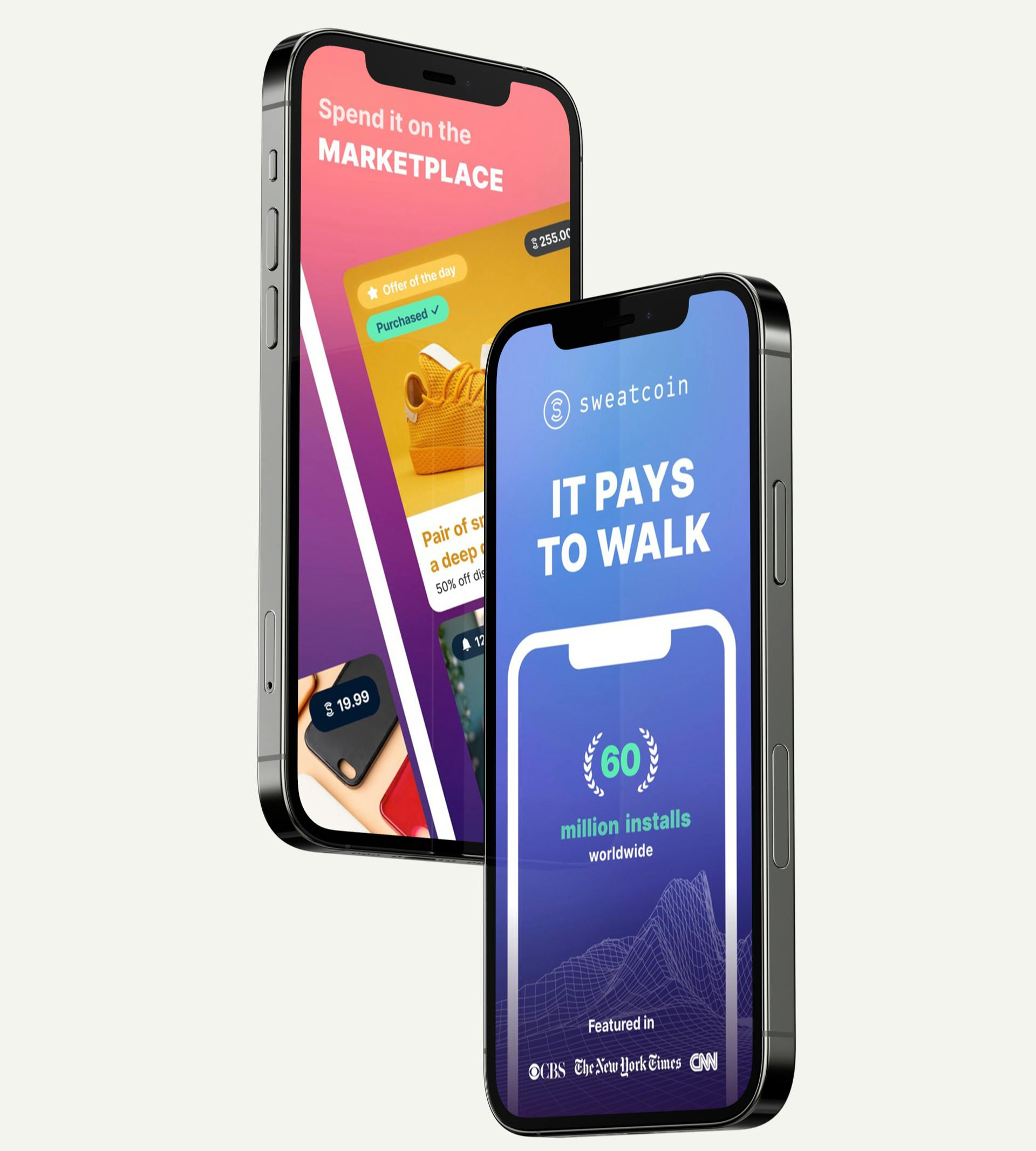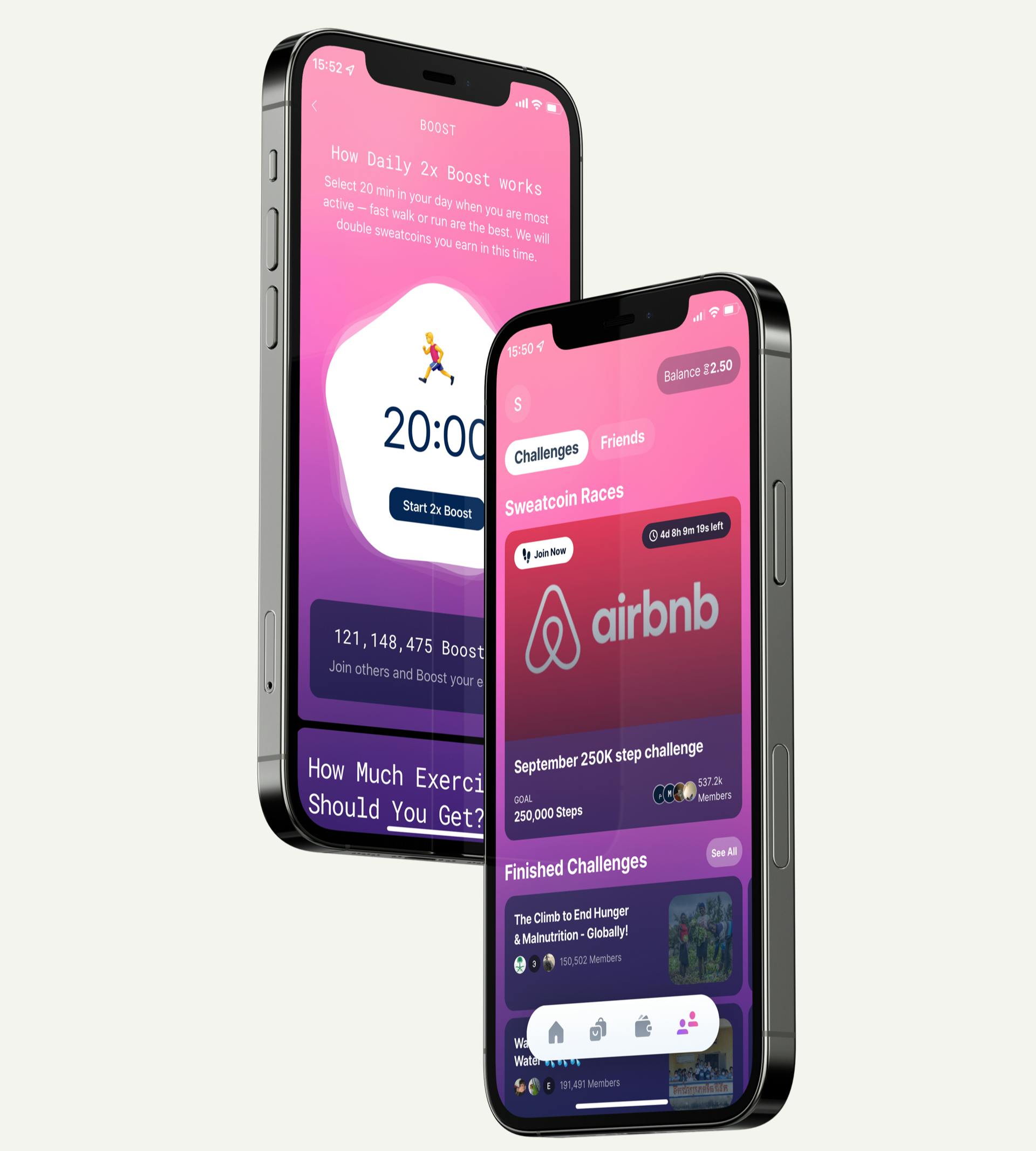Blog
How Sweatcoin built a $500m data union
By Shiv Malik
03.10.2022
For years people have been waiting for a clear winner to emerge in the data union space. Can it work to ask people to share data as a collective, usually around a particular vertical like cars, IoT, or health, and then remunerate them enough to attract more members? More members means larger data sets, means more revenue from potential data buyers. It is a straightforward recipe for success.
As someone who has been in the ‘share-to-earn’ space since the very start of 2018, I felt the answer to when it would all take off was usually conveyed with a large helping of hope. ‘With enough time, data unions will totally explode,’ was the usual answer. I myself was a fervent believer. I very much still am. But now I can put down the hopium needle. Why?
Sweatcoin, the mobile app that rewards people simply for moving, has proven data unions can work at scale. The British company has more than 100 million members, it’s issued a token valuing it at $500m (on crypto markets) and it’s generating an estimated nine figures in annual revenues. That’s a winning result. What’s even more fascinating is that Sweatcoin’s success appears to have been achieved by completely turning the data unions playbook on its head.
For most data unions, the playbook goes like this. First, get users to aggregate their data through a web- or mobile-based application. The data isn’t important to people per se; what matters most is the monetary gain they can earn. So if you pay people quickly enough you will see member growth. And so the flywheel begins: bigger data sets means more buyers, means more instant revenue for members who attract new members.
Pool counts over 120 of these organisations looking to monetise or act as a consumer’s digital agent. But as of yet, very few of this cohort have reached more than 1 million members. Most have adoption in the tens of thousands. So what did Sweatcoin do so differently that helped it scale to more than 100 million members? What’s their secret sauce?

Care about the data
While most data unions have believed their members won’t care much about the data they are sharing, the Sweat team focused tirelessly on building a community around step data. They put the data first, and don’t try to bury it. In almost every way the data is their mission: to create a healthier planet.
Good data comes with serious challenges. Founder Oleg Fomenko has said that making the step data in Sweat as accurate as possible was a response to people tying phones to dogs and machines in order to game the system for extra rewards. But ultimately the team’s algorithmic war with scammers enabled them to create information people can trust, which they had leveraged into something their members could bond around. Accurate step counts become personal challenges, or something friends can use to benchmark themselves each week in the pub. Sweat even has community challenges for raising money for good causes where total strangers can step together for a common aim. This really is data as the product instead of a byproduct.
Could the same be done with clickstream data or receipt data? Movement seems to be far more central to being human. And yet almost every data union seeks to aggregate data that people themselves generate. Therefore that data will always tell us a story about ourselves. It’s just a question of putting it front and centre in order to build a community.
Gate your rewards
While the Sweat app rewards people instantly for generating movement, until this year those rewards have been paid out in points rather than transferable tokens. While the points are instant and could be spent in a consumer-facing marketplace for exclusive deals and merchandise, members couldn’t transfer those points into cash.
But right at the start of Sweatcoin, Fomenko envisioned recording data and paying members with tokens on a blockchain. What stymied that vision was a meeting with Ethereum’s founder Vitalik Buterin in 2016. He told Fomenko that blockchain wasn’t ready to scale to Sweat’s level of use. Instead, Sweat was forced to create air miles for step data. By doing that they created a walled garden economy where those points could actually be leveraged in more valuable ways than simply giving users cash.
Sweat now has hundreds of partners like Audible, Skullcandy and Tidal, and also offers Amazon and Tesco gift cards as well as beauty and sporting brands to users instead of mere cash. This has helped them solve a major issue for brands who, in an age where third-party tracking is becoming less feasible, can instead partner with Sweat to get noticed by an already interested community. It’s a win all around.
Of course now, after surpassing 100 million people Sweat’s founder Oleg Fomenko has turned back to his original vision of rewarding users on the blockchain and put the ‘coin’ back into Sweatcoin.

Monetise the data last
Sweat says very clearly on its website that they will not sell the vast amount of geolocation and wellness data they now collect, even though it would appear that this is one of its most valuable assets. That in fact isn’t the case. Though the data is incredibly valuable, it’s the community of people with shared interests they managed to create that is almost certainly their greatest asset. Where they have shared the data, it’s been for research projects like with the NHS, which create public benefit. This perhaps proves that building trust with members is more important than simply monetising data sets. However, data monetisation is very much on the agenda: Fomenko has said he does want to offer Sweat members the choice to monetise their data. Of course, now they have the numbers, those fully opt-in or ‘zero party’ data sets will be ever more valuable at scale. Again, this is a complete reversal of the usual data union tactics. And it has worked a charm.
What more can data union innovators learn?
While the above points to a novel set of winning tactics in order to achieve many of the same end goals of a data union, what are the more general takeaways? Part two of this blog will surface some fascinating lessons from our latest user research and show what other best practices data unions should be following in order to truly succeed.